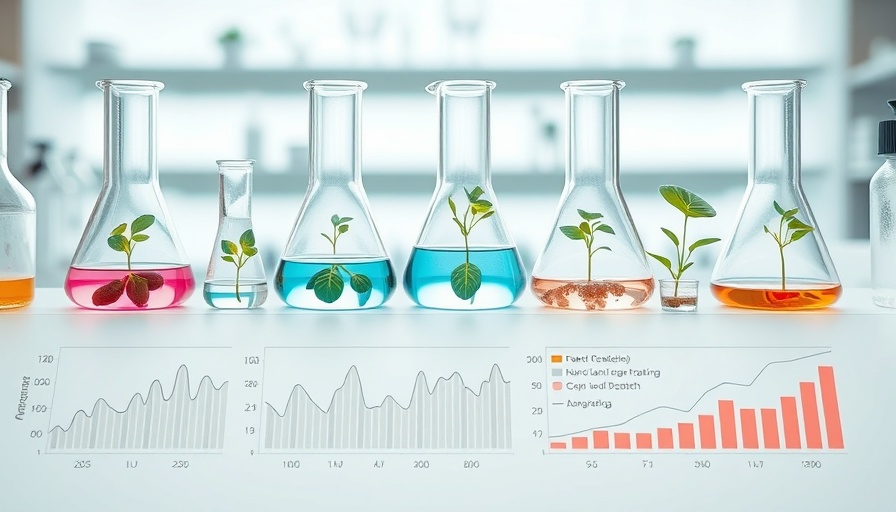
The Innovative Power of Emulsions in Agriculture
A groundbreaking technique developed by researchers at North Carolina State University is set to revolutionize agriculture by enhancing plant growth through the use of beneficial bacteria. This method, known as the Pickering emulsion technique, allows for the effective encapsulation of plant growth-promoting bacteria (PGPBs) so that they can be stored and applied alongside conventional agrochemicals. These findings, published in Advanced Functional Materials, signify a leap forward in sustainable farming practices.
Understanding the Science Behind Pickering Emulsions
The Pickering emulsion technique involves a simple yet effective process where beneficial bacteria, which aid in nutrient absorption and pest resistance, are stabilized in a biodegradable oil and a cellulose-derived polymer. This not only protects the fragile bacteria but also allows them to thrive even when combined with pesticides or fertilizers that they would normally be sensitive to.
“Many of the beneficial bacteria we know of are fairly fragile, making it difficult to incorporate them into practical, shelf-stable products,” explains John Cheadle, a doctoral student and co-lead author of the study. This new emulsion technique not only maintains their viability but allows for a simultaneous application of these microbes with necessary agrochemicals, offering an integrated approach to plant care.
Why Does This Matter for Farmers?
The use of PGPBs is essential for promoting plant health, particularly in nutrient-depleted soils. By stabilizing these microbes, farmers could substantially enhance crop yields, reduce reliance on chemical fertilizers, and decrease pest problems. This is particularly critical in an era where sustainable farming practices are becoming increasingly vital to address global food security without harming the environment.
As Saad Khan, another lead researcher, points out, “A healthy plant microbiome allows the plants to make better use of nutrients available in the soil and more resistant to pathogens.” This suggests that with the use of this emulsion technique, growers may be able to use fewer pesticides and fertilizers while still maintaining high levels of crop production.
Effects on Pest Management
The performance of this emulsion technique was also tested for pest control efficacy. When the emulsion was integrated with a common pesticide, fluopyram, it demonstrated gradual effectiveness against pests, killing approximately 95% of nematodes over 72 hours, compared to rapid kill rates when the pesticide was delivered alone. This slower action can be beneficial as it can provide sustained protection while minimizing the potential for developing resistant pest populations.
The Future of Agriculture
Looking ahead, researchers plan to conduct greenhouse tests to further evaluate this technique's effectiveness across different plant species and with various PGPBs. The implications are massive, as this could lead to a new era of farming practices that champion sustainability without sacrificing productivity.
This innovative emulsion technique not only opens up new possibilities for enhancing farm productivity but also aligns with the principles of eco-friendly agriculture by promoting the use of beneficial organisms over harmful chemicals.
Takeaway: Embracing Sustainable Solutions
In summary, the advent of successful emulsification of beneficial bacteria into practical farming applications could herald a new age for agriculture, focusing on sustainable practices and crop resilience. For anyone interested in agriculture, biotechnology, or sustainable living, staying updated on such groundbreaking news could inspire proactive changes in lifestyle or professional practices.
 Add Row
Add Row  Add
Add 




Write A Comment